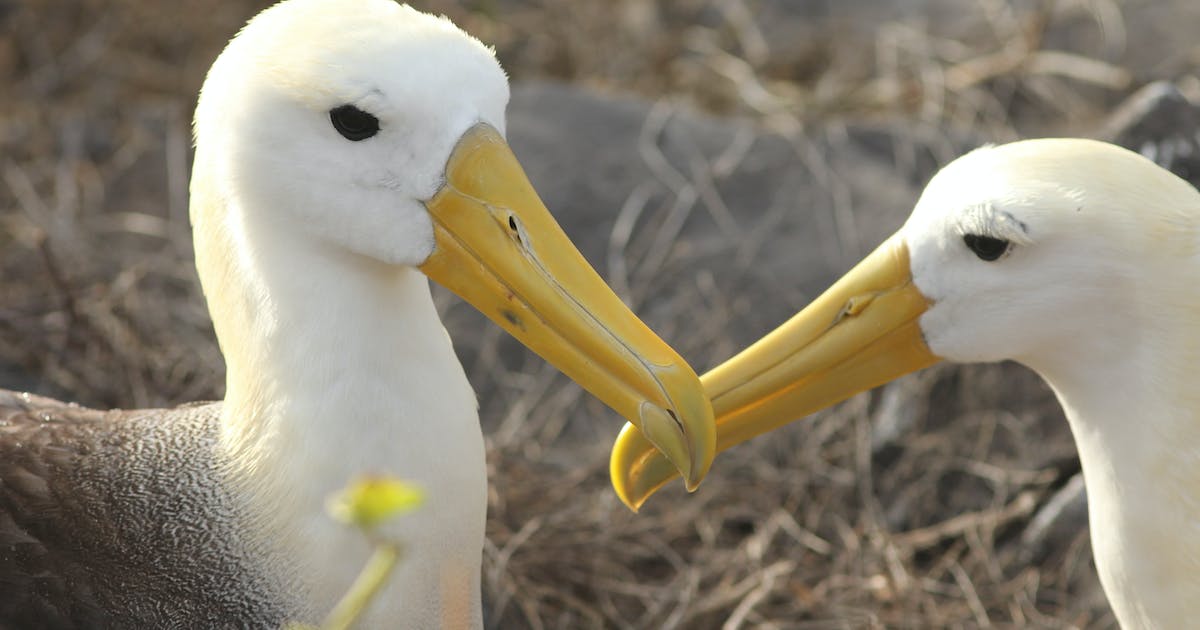Editor’s note: News about conservation and the environment is made every day, but some of it can fly under the radar. In a recurring feature, Conservation News shares three stories from the past week that you should know about.
1. It’s not you, it’s climate change
Warming ocean temperatures could have a chilling effect on albatross couples.
The story: Albatrosses are one of the few species in the animal kingdom that typically mate for life. However, a new study found that albatross “divorce” rates are rising — likely due to climate change, reports Katherine J. Wu for The Atlantic.
Under normal circumstances, albatrosses find a mate and return to the same spot each year to breed, with one partner taking a few weeks to rear the egg while the other searches for food. As ocean temperatures warm, food is becoming scarcer, forcing some birds to leave their eggs behind to avoid starvation — and to search for a new mate that can support them. As a result, albatross decoupling rates have more than doubled in some areas.
The big picture: “Divorce means [the albatrosses] are starting over,” Nina Karnovsky, a bird biologist, told The Atlantic. “They have to go through the whole courtship again, the whole energetically expensive display,” she said, adding that these couplings can take years to form.
And while these birds are trying to find new mates, they are missing opportunities to reproduce, which could decrease overall populations of albatrosses worldwide.
Early blooms could have cascading consequences in cities.
The story: Trees in urban areas are blooming earlier than their rural counterparts — but that isn’t always a good thing, reports Michael Levitt for NPR. Using data from 85 cities across the U.S. between 2001 and 2014, researcher Lin Meng found that the hotter temperatures and electric lighting in cities trigger earlier greening of trees, leaving them susceptible to spring frosts.
The big picture: A major downside of early blooming is that trees could fall out of sync with pollinators, says Meng.
“That may result in food shortage and may affect insect development, survival and reproduction,” she said. It could also affect trees’ ability to bloom in future years, scientists stress.
But there is a silver lining: “If we have a longer growing season, trees would absorb more carbon dioxide from the atmosphere,” Meng said. “They’d have a longer period to do the cooling effect that can help mitigate the urban heating effect in cities.”
When it comes to sewage pollution, just a few cities are causing a big stink.
The story: A new study found that just 25 cities around the world are responsible for half of the nitrogen pollution that flows from sewage into the sea and other water sources, threatening the health of humans and marine life alike. Additionally, roughly half of the pathogens coming from sewage originate in just 25 sources, and scientists recently pinpointed exactly where these sources are, reports Nikk Ogasa for Scientific American.
Compounding the problem? Climate change. As sea levels rise, untreated sewage overflows are expected to become more frequent and severe, public health experts say.
The big picture: Though the study’s results stink (literally), they could be critical to improving the world’s waste problem. By pinpointing exactly where nitrogen and pathogen pollution comes from, researchers can help policymakers identify effective sewage treatment and filtration strategies that are targeted to specific areas.
“[This study] helps conservationists, wastewater managers and sanitation specialists work together to develop these interventions that can mitigate nitrogen or pathogens entering the environment, or both,” Joleah Lamb, a marine scientist who was not involved in the study, told Scientific American. “It teases these problems apart and shows where you will get the most bang for your buck.”
Cover image: Albatrosses in the Galapagos (© Will Turner)
Further reading:

